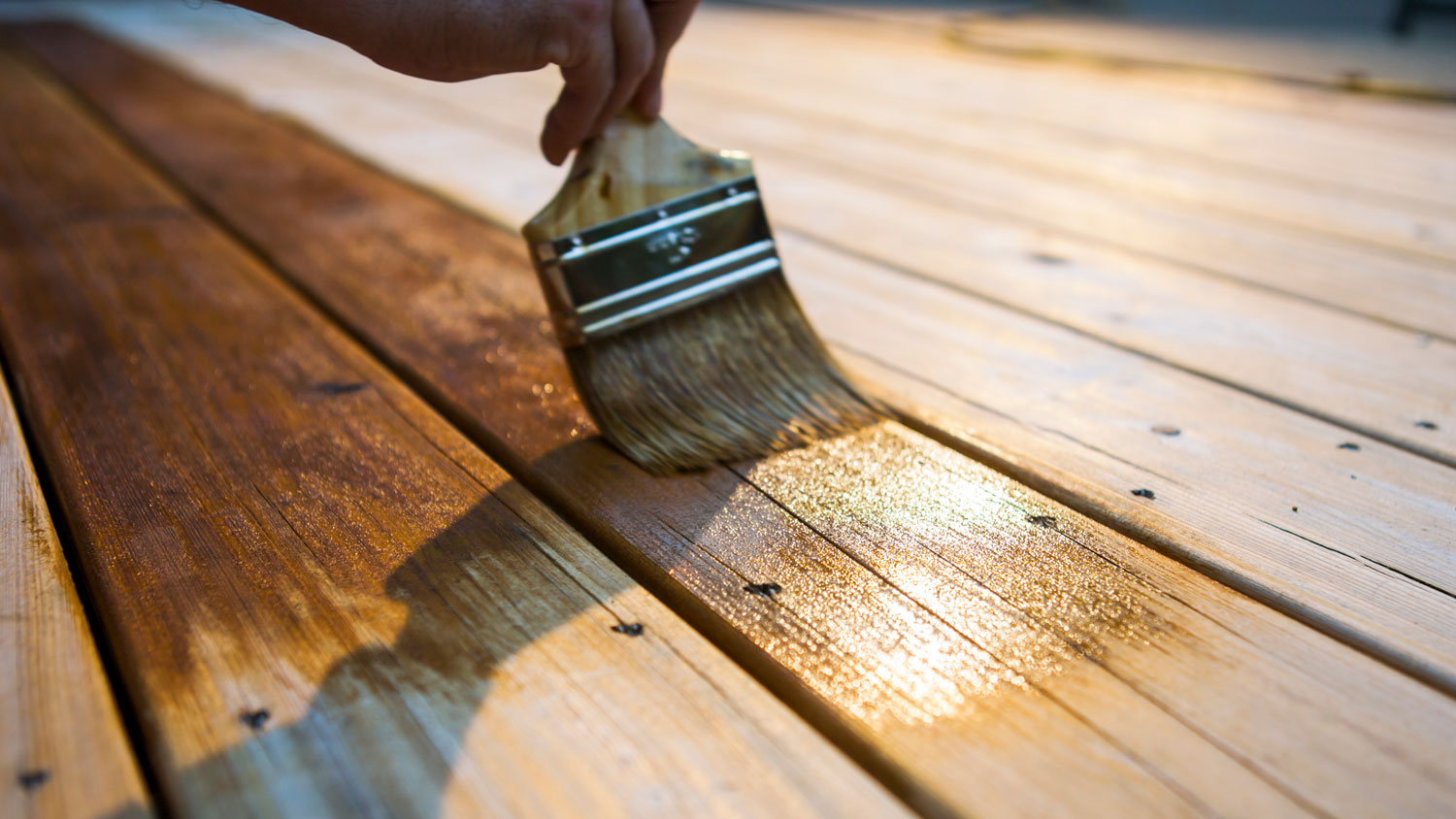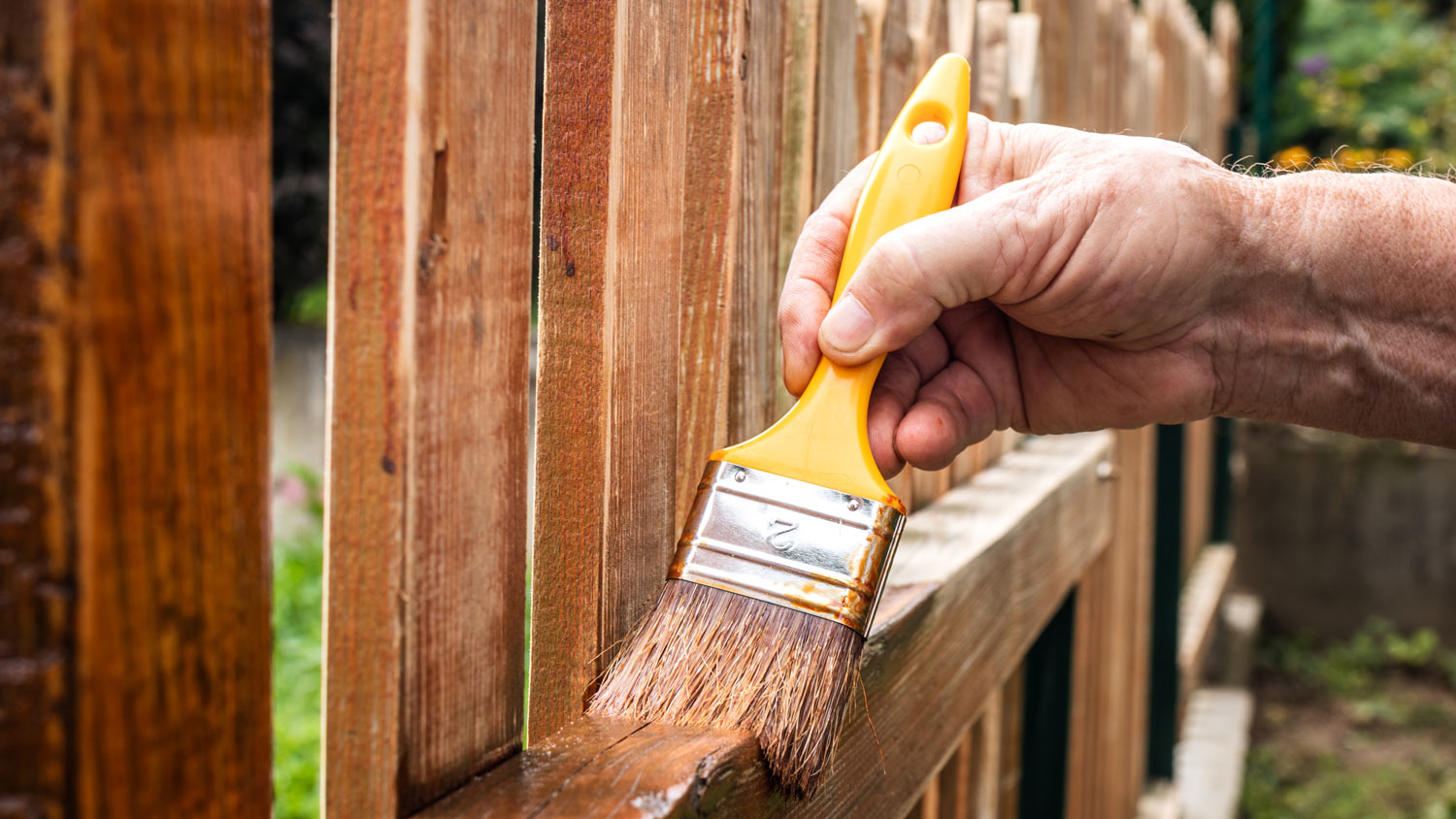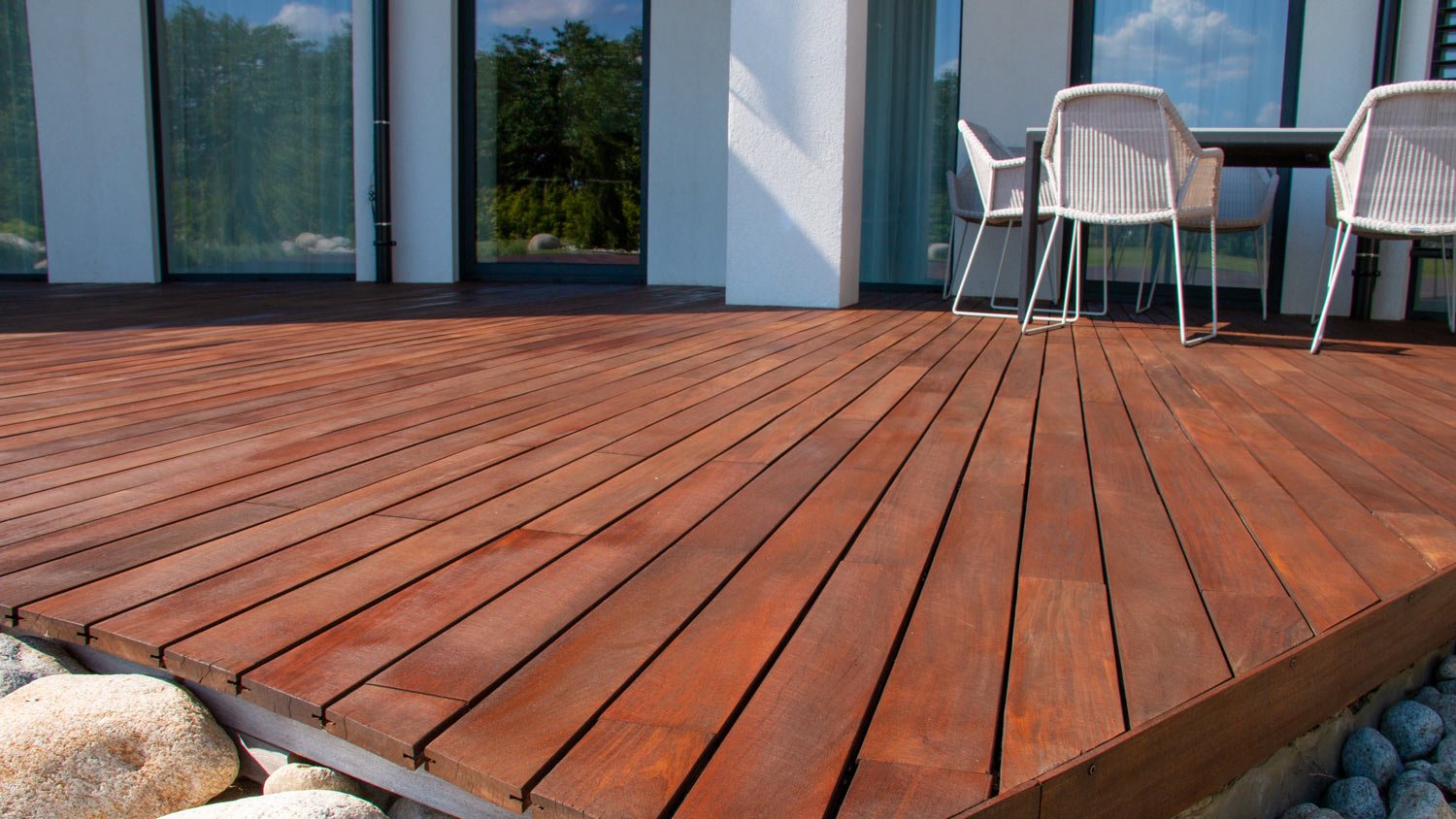
Sealing a deck is important for protecting it against the elements. Find out the cost to seal a deck, whether you DIY or hire a pro to do the job.
Get yourself out of a sticky situation


Applying too much stain or failing to wipe off excess stain will leave you with a perpetually wet, tacky surface.
Always apply stain in the temperature and humidity conditions recommended by the manufacturer to avoid issues.
The best way to fix the problem is to sand the surface and start over.
It’s easy to think that applying wood stain is as simple as painting: You just brush or roll it on and you’re done, right? Unfortunately, wood stain is a bit more finicky, and you’re more likely to run into problems. If you find yourself asking, “why is my wood stain not drying,” you can use this guide to troubleshoot your issue and get a solution underway to finish up your project.

The most common reason for a tacky surface after staining is applying too much stain. Unlike paint, which sits on the surface, stain is meant to penetrate the wood. If you apply too much, some of the stain won’t penetrate and will congeal on the surface, leaving you with a sticky mess that doesn’t dry completely.
The best option is to wipe down the surface, do a light sanding, and reapply a thin coat of stain to get an even coloring. Be sure to wipe off the excess before it dries.
Speaking of wiping off the excess, this is another reason some homeowners’ staining projects go awry. Stain isn’t designed to remain on the surface of your project. Anything that doesn’t soak in will partially evaporate, leaving you with tacky pigments that will never fully dry.
Give your project a light sanding, reapply a thin coat of stain, and be sure to wipe off the excess before it dries.
Stain should soak into the wood grain and do its magic beneath the surface. If you don’t sand off the previous finish thoroughly, it will leave the stain just sitting on top, where the bulk of the stain will evaporate, leaving you with sticky pigments.
Use a low-grit sandpaper to sand down the surface until you see bare wood. Sand again with a high-grit sandpaper before reapplying stain. If the surface was previously painted, you can start with paint stripper and then move onto sanding.

Stain relies on evaporation to work properly. The solvent evaporates after application, leaving just the pigments and binders behind. Solvents evaporate much more quickly in hot temperatures, which can prevent the pigments from setting into the wood grain. In cold temperatures, the evaporation slows down significantly, which can make the stain congeal on the surface rather than soaking into the wood.
You can scrape off any pigments that haven’t dried and sand down the surface to start over. Be sure you reapply in the temperature range recommended by the stain manufacturer.
Much like temperature, humidity affects how quickly stain soaks in and dries. In high humidity, the solvent evaporates much more slowly, which can make even a good application feel tacky for longer. In low humidity, the solvent can evaporate too quickly, leaving sticky pigment on the surface rather than allowing it to soak in.
If you applied in high humidity, give your project an extra day to see if more drying time helps. If not, or if you applied in low humidity, sand down the surface and start over in proper conditions.
Sometimes, the stain itself is the issue. For example, if you’re staining a wood with a high natural oil content, like teak, an oil-based stain may not soak into it properly, which can leave you with tacky pigments solidifying on the surface.
Sand down the surface and start over with a more appropriate stain. Consider a slow-curing oil-based stain if you live in a hot area, and go with a water-based or alcohol-based stain if you live in a cold climate to speed up the curing process.
Staining wood is a project that just about any DIYer can tackle regardless of experience, but if you run into problems with a tacky surface or stain that won’t dry and risks ruining anything that comes in contact with it, call a professional for help.
It’s also a good idea to call in a professional any time you need to stain antique or heirloom furniture to avoid damaging it beyond repair. Additionally, if you’re working on large projects like an outdoor deck, call in a deck staining company near you to avoid wasting time and money on staining, sanding, and restaining.
From average costs to expert advice, get all the answers you need to get your job done.

Sealing a deck is important for protecting it against the elements. Find out the cost to seal a deck, whether you DIY or hire a pro to do the job.

Finding maintenance-free decking that works for your home, budget, and lifestyle can be challenging. This guide lists the 7 best low-maintenance deck materials.

If your load-bearing porch post is starting to rot and deteriorate, you may wonder who to hire to replace porch columns. Let’s explore the project.

Cleaning your deck at least once a year boosts its durability and appearance. Learn how to clean decking, whether it's wood or composite.

You can get even more years out of your cedar fence by giving it a little stain and TLC. Learn how to seal a cedar fence with this guide.

If you’re stuck wondering why your deck stain is peeling prematurely, use this guide to troubleshoot the problem and find a long-lasting solution.